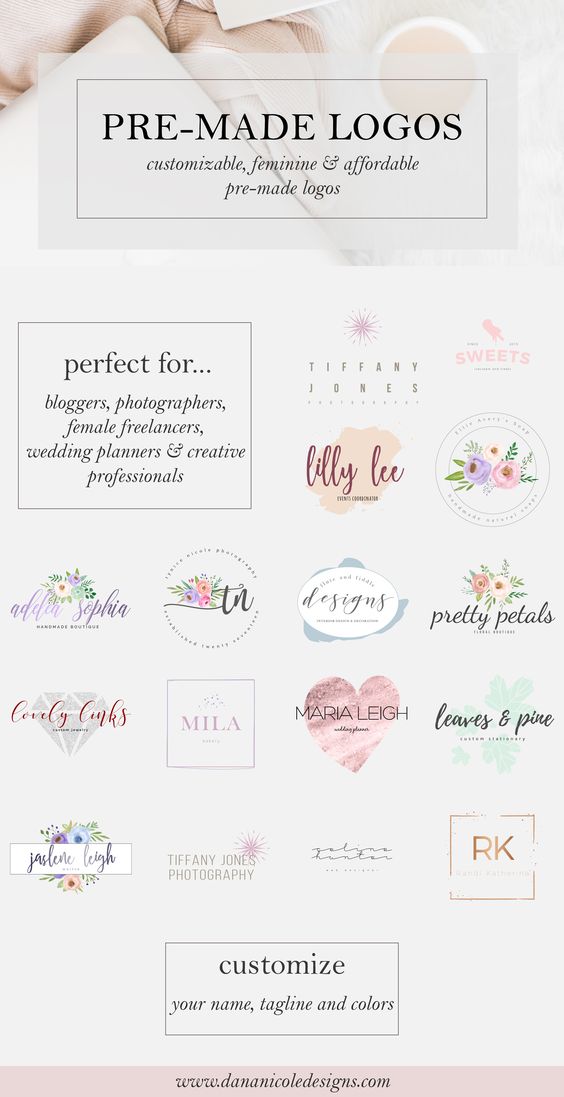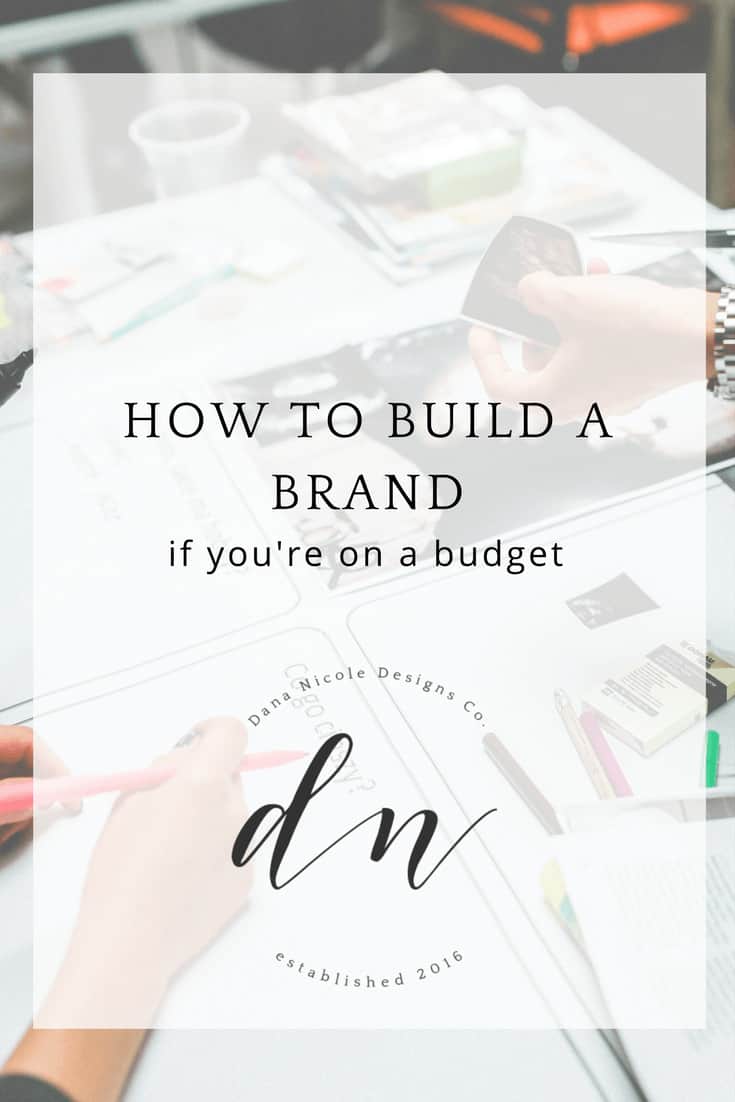Last Updated on
You’ve probably heard the term “brand strategy” or “brand management“. Maybe you know exactly what branding means or maybe you feel like it’s just an elusive buzzword marketing professionals use. But deep down, you know that companies who know how to create a brand (and sustain it) do well in the long run.
You don’t need to learn graphic design in order to build a brand (although, it will help knowing how to create professional designs). What you do need to have is a plan in place for consistency, which we are going to talk about today.
Before we go any further, you might be thinking to yourself, “what is branding?”. So first, let’s define branding so we know exactly what it is.
Branding is a fairly simple concept: it’s how you are positioned in your customers’ mind. It encompasses every aspect of your business from your logo, website, social media, your physical store locations and the person answering your phones.
Branding has three components: corporate identity, brand identity and brand image. All three components work together to create your total “brand”.
Branding your business (or even branding yourself if you are a solo act) can be a large investment that some businesses just can’t quite afford at the moment! But that doesn’t mean you should forgo your branding process.
And that definitely doesn’t mean that having a brand strategy is out of the question. So for all you DIY’ers and hustlers out there, here is my no-nonsense guide on how to create a brand. If you like this article and feel you want to learn more, grab my e-book to DIY branding: Brand & Style. This e-book is going to go in-depth on how you can brand your business or yourself through your corporate identity.
Step 1: Create A Buyer Persona
If you want to create a brand, your first step will be to really (emphasis on the really) understand your customer, and we can do this by creating a buyer persona.
A buyer persona is a semi-fictional character (or characters) that you have created in order to represent your customers. Doing so will help you tailor your business’s message, products, and offerings towards your customers (which will make you irresistible and keep ’em coming back)!
Creating a buyer persona is basically creating a character based upon their demographics, but more importantly, their psychographics (based upon their attitudes and aspirations). Notice how in my buyer persona, I didn’t just have demographic information, but I went a bit deeper and talked about why my character needs my business, what her frustrations are, and how I can help.
Ask yourself: “what keeps my customers up at night? What is the ONE problem they need me to solve for them, and then, how can I solve that?“
Buyer personas can be created through research, either by Googling who you think your customer is and by gaining information online, or by sitting down with some of your actual customers and getting to know them. I recommend doing a combination of the two. If you can’t sit down with any of your customers, feel free to browse online forums and Facebook groups to find some people you can speak with.
Knowing your customer will help you to create a brand strategy because you are going to know exactly what it is your audience is looking for.
Tip: You are able to send a virtual coffee through Starbucks, so if you are lucky enough to get someone online who is willing to sit down and answer questions for you, thank them by sending them a $5 Starbucks e-gift card so they can get themselves a nice treat.
Step 2: Create A Mood Board
Now that you know your customers, you will be able to create a brand that your audience won’t be able to resist and can start this by creating a mood board. By creating a mood board you will be able to have a good visual of what you want your brand to look and feel like.
A mood board is a collection of images that represent how you want your brand to look/feel.
A mood board is something I create for all my clients. The mood board uncovers so much about how the client wants their branding to feel that it’s a necessary step.
Here’s a story that I don’t like sharing: when I first started designing, I wanted to use ALL the fonts, and ALL the colors. I skipped the mood board step and went head first into creating my designs.
The other day, I was going back and looking through my old work and noticed that for one design, I had used more than a couple different fonts, several variations of colors…oh boy. Thankfully that wouldn’t happen now (thanks to me gaining some mad organizational skills and learning how to use mood boards to organize my thoughts)!
A mood board will help you organize what you want your branding to look like so you can avoid mistakes like the above happening!
Some things you’ll want to make sure you include on your mood board are:
- color palette (generally around 5 colors)
- fonts
- imagery that represents your brand
Other things you can include:
- quotes
- textures
And the best part? You don’t need any fancy software to create one. You can get out the glue-stick and poster-board and do it up old school or you can use a website such as Canva if you don’t have InDesign or Illustrator!
Step 3: Design Your Logo
This step can be a bit tricky if you aren’t a designer! But if you have your mood board, it will make logo selection a whole lot easier! If you plan to create a brand, a logo is a must.
A logo is a visual marking of your company that when people see, they automatically think of you and how your business makes them feel.
Your logo is going to be going on your business card, possibly store signage and clothing, letterheads, your website, social media and probably many more places. It is very important to have a logo that fits your brand because that thing is going to be everywhere!
And since I’m talking about branding on a budget, I know that custom logo design isn’t within reach for you at this point. Instead, let’s talk about some ways you can get a beautiful logo (that is still on brand and affordable)!
If you are looking for a cheaper alternative to a custom logo, take a look at my pre-made logos. They are an excellent starting point and can be customized with your name, colors and tagline! Feel free to email me your mood board and we will be able to find a logo that is perfect for you! (At this point in time, I no longer offer pre-made logos. Etsy is a great place to search for pre-made logos!)

Step 4: Design Your Web Site
If you are running a blog or online business than your website is going to be a huge touchpoint for your customers. Use your mood board to make sure your website is visually in line with your brand. Update your website’s color scheme, font pairings and imagery in order to have the same look and feel that you have created through your mood board.
Next, take a look at the copy/content on your website and see how you have worded things. Branding your business isn’t just about how your business looks externally, you want to make sure that even your content suits your brand.
Is your website too formal/informal for your buyer persona? Take the time to revise the copy so that it really speaks to your customer. Creating copy for your customers will help you create a brand that resonates with them.
An extra step you can take is by adding customized Pin It buttons to your website. Try to incorporate your branding in as many touchpoints as possible. If it helps, get a friend to look at your website and ask her if anything feels off – and where you can improve.
Step 5: Update Your Social Media
Incorporate your logo, color palette and fonts onto your social media as well. Canva has some templates for you to upload your own media and create graphics for social media such as Pinterest graphics or banners for your Facebook page.
Canva has a limited font library however, they have the option to upload your own fonts if you have some that differ! I use Canva to create ALL my Pinterest graphics even though I have professional design software. It’s so quick and easy!
Step 6: Make Use Of Free Marketing
Now you’ve got the visual components of your brand figured out (on top of knowing your customers) you are ready to start building your brand through your marketing efforts.
Collaborate With Other Small Business
Collaborating with other small businesses who share a similar brand to yours can be an inexpensive tool in your brand strategy toolbox. One of my favourite types of collaborations is to guest post on blogs that are similar to mine.
I look to post on blogs that empower women entrepreneurs and bloggers. Doing so helps me to establish my brand and also allows me to reach new potential customers.
Host A Webinar
Webinars are such a powerful way to share your knowledge and position yourself as an expert in your community. You can do this by uploading a YouTube video for your customers to watch or by using a free service such as Free Conference Call.
Send Out A Monthly Newsletter
Sending out a monthly newsletter is an easy way to keep in touch with your leads by sending them useful and valuable information consistently.
This article may include affiliate links. As an Amazon Associate I earn from qualifying purchases.

Dana Nicole is an award-winning freelance writer for MarTech/SaaS who was rated one of the best SaaS writers by Software World. She specializes in writing engaging content that ranks high in search engines and has been featured in publications like Semrush, ConvertKit, and Hotjar.
Dana holds a Bachelor’s degree in Business Administration and has over 15 years of experience working alongside national brands in their marketing departments.
When Dana’s not working, you can find her dancing en pointe, cooking up new recipes, and exploring the great outdoors with her two big dogs.

